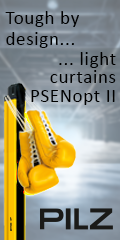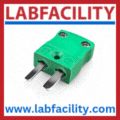
Posted to News on 14th Jul 2010, 00:00
All the fun of the fair
As automation technologies play an ever more important role in industrial production, we look at the highlights of Automatica 2010, and how these illustrate the latest trends in the automation industry.
June saw the Munich Trade Centre playing host to Automatica, the international trade fair for automation and mechatronics, presenting innovations in the key technologies for handling and assembly, machine vision, and a whole spectrum of complementary technologies.
Robotics
The basic advantages of robot technology are a high level of flexibility, reliability and its use in difficult working environments. In addition to this, we have been seeing technological innovations for many years, for example in the area of robot safety or simpler programming and handling. Along with decreasing prices, this has made the use of robots more attractive and robotics has made its way into an increasing number of new applications in industry in general. Automatica provides an overview of the wide range of industrial robotic solutions on the market.
Mitsubishi Electric announced the introduction of its compact multifunctional robot Melfa RV-2SDB. Thanks to a 2 kg payload and cycle times up to 0.6 s, this multi-axis vertical articulated arm is achieving considerable increases in performance in production and assembly cells, which could result in uses in medical technology and other quick- running applications. In addition, a new system for flexible workpiece handling is being presented jointly with Robotics Technology Leaders. The robots will be able to make tools which do not have to be precisely aligned or positioned, according to manufacturer's details, and without the aid of a visual system.
A new generation of robot controls was the highlight of 2010 from the Italian company Comau. The new controls provide an impressive performance for low energy consumption due to the APC820 industrial PC with dual core technology. The compact X20 input/output system and the fieldbus generation using Hilscher technology make a reliable interface to customer applications possible. The exchange of information between the peripheral modules and the Comau control software is ensured through the Ethernet Powerlink in real time. Spaces with different geometries can be used dynamically to restrict the robot's outside area. In addition, integrated driver circuits are used for energy recovery.
The TwinCAT automation software with integrated control from Beckhoff supports various parallel and serial kinematics, for example as used for pick-and-place tasks. There was a live demonstration at Automatica of the extension of the TwinCAT software by 6-D kinematics for cable robots. The advantages of the cable robot for pick-and-place tasks come from its mechanical structure: elaborate carbon rods are replaced by economical cables, the arrangement of the servo motors is flexible (for example underneath the robot) and the workpiece gripper can be rotated and tilted further in comparison with alternative solutions.
Assembly and handling
At Automatica 2010 visitors saw one of the biggest concentrations of companies providing turnkey assembly systems in Europe. While many companies in this sector see themselves as providers of special engineering, where each system is unique, the number of companies providing modular systems is increasing. Both worlds, the suppliers of modules and special engineering, will be presenting a great many extremely interesting solutions at Automatica.
The Jetwing 2010 assembly platform from Sortima is coming closer to its big sister Spaceline, a linear transfer assembly line, making assembly even more flexible. Two new sizes of workpiece holder expand the Jetwing range. Flexibility is also the byword for the modular construction: between 8 and 48 assembly stations are now possible, making change-overs from semi-automation to full automation and from small to large piece numbers run smoothly.
Swiss company Montech exhibited a wide range of transport solutions. For transporting larger workpieces the company offers a multitrack conveyor with belts or toothed belts, that can move weights up to 100 kg. It is available with three different drives with spur gear motor. The smooth transportation of workpieces is ensured by a selected acceleration ramp and brake ramp. During the trade fair the manufacturer will be exhibiting the uses of the Montrac transport system and will demonstrate the conveyance of beverages. Montrac meets the high standards required in care, precision and safety when moving objects and so is ideal for exhibitions, museums, showrooms, libraries and catering.
Machine vision
Machine vision (MV) has become increasingly significant over the past few years. In addition to being a fixed component in many areas of quality assurance, it is also hugely important in automation. Through developments in software and data administration, machine vision is increasingly enabling the optimisation of production. A global system of components and systems has developed over the past few years. 2D systems and vision sensors are still dominant, but 3D applications are coming up fast.
Matrox GatorEye industrial cameras from Rauscher are armed against dust, dampness and fluctuations caused by machinery. The stable, dust-and waterproof IP67 housing of the CCD cameras copes admirably with these conditions and so is ideal for use in machine vision in wet or inclement sectors of the automotive, food, beverage, chemical and pharmaceutical industries. Matrox GatorEye offers connections with external devices with its optocoupled trigger input, strobe output, eight freely programmable user I/Os, and direct control of LED lights.
The BCL 548i barcode reader with integrated Profinet from Leuze Electronic can be operated directly in the Profinet network with no detours. In addition, due to the integrated switch technology, it can also be used in a line network structure, which minimises cabling outlay. Depending on the requirement, the dovetail technology and four M4x6 threaded holes make simple and convenient fastening in the system possible. Adjustment and parameterisation are simplified by the presentation of the values on a display. During operation high reading reliability is ensured by the code reconstruction technology (CRT) - even in fast processes.
Automation and associated technologies
Automatica incorporates associated technologies such as positioning systems, drive technology, sensor technology, control technology, safety technology, utility engineering and software into the core areas of assembly and handling, robotics and machine vision. In addition there are exhibitors from the service sector and from research and technology. And of course there were highlights.
Igus has developed an innovative compact energy chain system, which can rotate cables by 3000 degrees in very confined spaces. The TwisterBand TB30 guides energy, data and media cost-effectively with very little wear. Due to the low centrifugal forces caused by its mass, rotary speeds up to 720deg/s are possible. In the process all cables are kept close to the axis. As so little space is required, the energy chain system can be safely used in all installation positions (horizontal, vertical and overhead). Most applications for the slim-design rotary chain systems are for use with robots (supplying axis 1 and 6) and for special mechanical engineering tasks. Rotary movements in a very confined space are also common in handling, hoisting and assembly devices of all kinds, and in test stands and experimental rigs. Wind turbines are another area of use, where the sails can be adjusted within the rotary movements with little wear.
The Profinet variant of the Multifunctional Gate Box from Euchner now also reduces wiring, in addition to its actual task, securing a safety door according to EN ISO 13849-1. Each function will no longer be wired individually, but rather the customer will define which element is to be integrated and which function is behind it. Comprehensive diagnostics information in the form of Profinet reports also enable quick and targeted problem solving when needed.
Mechatronics
Mechanics, electronics, control technology and informatics have long worked hand in hand in mechanical and plant engineering - under the umbrella term 'mechatronics'. Today there is a wide range of practical mechatronic solutions and what are known as mechatronic clusters were also represented at Automatica. The cluster approach is intended to improve companies' competitiveness by making a wide network of specialist suppliers, relevant research institutions and specialist personnel available to them in their area.
One such cluster is Mechatronik & Automation. At Automatica the range of services included a project for the automated production of carbon fibre components, where 'CFK-Tex', a partner in the cooperation project, will present research findings for efficient lightweight construction.
Another project from Cluster Mechatronik & Automation is a modified high-performance weaving machine, which weaves samples according to shades of colour. These are installed on an oversized keyboard using the feet. The initiative came from the IT company ITQ, and enables students to carry out practical training. The basis of the project is a weaving machine from Lindauer Dornier. In the case of the manufacture's series machines, the heald shafts, which are responsible for producing samples, are moved using complex gear technology. Students participating in the Limoweb project have replaced these gears with a direct drive in the form of linear motors, which enables samples to be changed during operation, thus avoiding changeover time.




